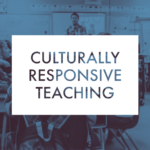Fostering SEL Skills Through Intervention in Problem Behaviors
“Know your POWER, so that your INFLUENCE can live up to it.”- Kristen Hopkins
I came up with this quote in 2016 after seeing some of my most troubled students lives transformed through Social-Emotional Learning (SEL). But it wasn’t just SEL that transformed their lives; it was me knowing my power and understanding that that same power had influence — influence to change the narrative of “troubled youth” by changing my perspective first.
Being around students that had major trauma and who lived in high poverty conditions made me first understand that they are not all the same. I took the time to get to know each and every student in my program. I learned about their families, strengths, weakness, mistakes and fears. One of my students told me I just had to remember his name and he would respect me. He then explained that his teachers would never say his name correctly and that he was named after his deceased father. That was his trigger to act out, and I would have never found that out if I didn’t ask. Taking the time to build these relationships allowed me to know how I would relate and interact with students as well as plan proactive strategies before negative patterned behaviors could arise.
For so long we’ve labeled our “at-risk” students and put them into a box before getting to know them. To bring about new solutions that would help me connect with students, I had to first shift my own personal paradigm.
In his book Start with Why, Simon Sineck writes, “If we are starting with the wrong questions, if we don’t understand the cause, then even the right answers could steer us wrong.” I had to understand the “WHY.”
WHY was a student behaving this way? WHY is this so hard for this student? After I understood some of their patterns, I started to ask my students what was their WHY. This is what made me realize that many students didn’t know their WHY: WHY they came to school, WHY they wanted to graduate, WHY they wanted to do better. So guess what? They would miss school, they didn’t get good grades, and they didn’t want to do better.
When students facing challenging behaviors don’t have a WHY, it can be difficult to make room for social-emotional skills to form.
I have a former student that didn’t voice her opinions while class was in session, but always wanted to talk about the topic after class. I started to realize that she had great ideas but wasn’t confident enough to speak up. She was too worried about what her peers thought of her. Many students feel the same way, but some respond by acting out because they think it’s the cool thing to do and they want attention from their peers.
One of the best places to target a child with behavior challenges is when you can interact with them one-on-one. When a student is sent to in-school suspension or a Restorative Practice Center, it can become a great space to conduct real intervention and incorporate Social and Emotional Learning. This can only happen if this space has structure and the teacher has control over the space.
Students typically come into these environments upset due to being kicked out of class. Positive attention skills, such as cultivating a warm and engaging style when students enter, can shift the mood of a child. Using active listening techniques to hear a student’s side of the story instead of automatically assuming that they are wrong allows a student to open up. In this way you can began to build a rapport with the child.
Research shows us that punishment does not change negative behaviors, however a respectful consequence along with a “teaching” component implemented consistently can change behavior.
When we first acknowledge the positive behaviors that students have, it begins a dialog. Once you establish a good rapport it’s time for some self-reflection. This allows a student to understand how to make responsible decisions in the future that will keep them from being kicked out of class. Coming up with solutions together to replace the negative behaviors will give the student a voice and allow them to feel an ownership of the decision process. This is not only encouraging for students thinking and expression of ideas, but also for their autonomy and self-direction.
Once you have guided them to a solution, then it’s time to set goals while promoting intrinsic motivation. Giving students who struggle with behavior challenges incentives is not the best solution, but allowing them to feel internal satisfaction for good behavior is a very effective way to ensure consistent growth.
Fostering Social-Emotional Skills through intervention first starts with the educator and the tone that’s set for intervention. So just like the quotation I included in the beginning, we all have power. Understanding how your power can influence your most challenging students will help produce amazing stories of resilience.

